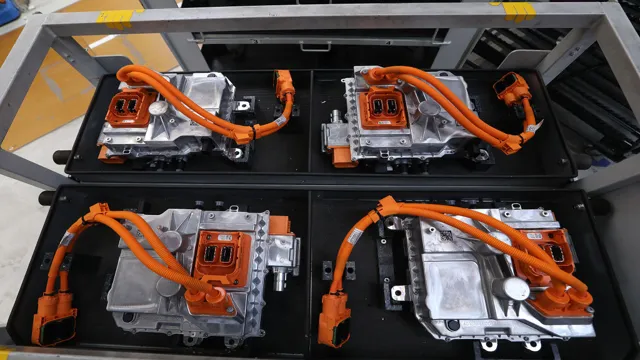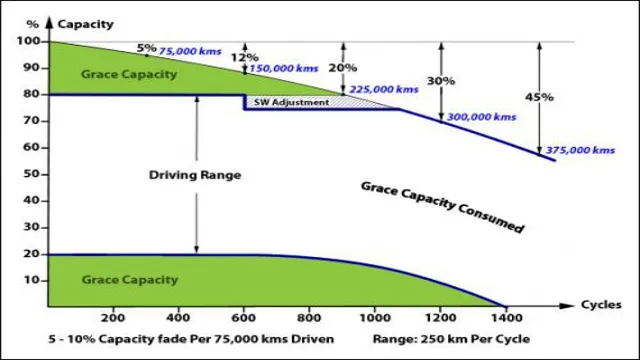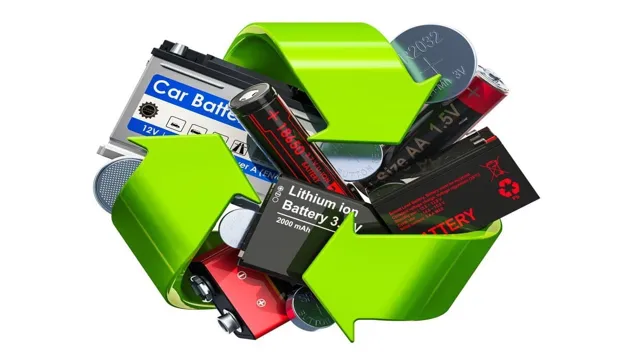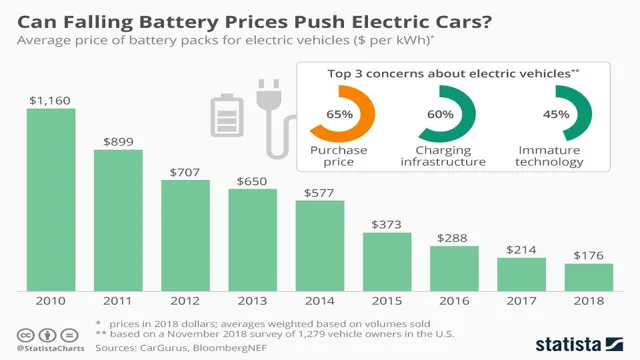Going Green: How to Optimize Charging your Electric Car with Ground Fault Interrupter (GFI) Technology
As you make the switch to electric cars, one important consideration is how to ensure that you charge them safely. After all, while electric vehicles are becoming increasingly popular, the charging process still involves some risks. That said, with proper precautions and good habits, charging your electric car safely shouldn’t be a problem.
In this blog post, we’ll take a look at some of the tips and tricks you can use to make sure that you’re charging your electric car in a way that is both efficient and secure. From understanding your charger to taking care of your battery, we’ve got you covered. So, let’s get started!
GFI Outlets and Your Electric Car
If you own a battery electric car, using a GFI (Ground Fault Interrupter) outlet to charge it is a safe and wise choice. GFI outlets are equipped with a mechanism that can detect any abnormal electrical activity and quickly shut off the power supply, preventing any electrical accident or damage to the car’s battery. These outlets are especially recommended for outdoor charging stations or damp areas, where the risk of electric shock is higher.
Besides their safety features, GFI outlets also offer convenience, as they can be easily installed and allow for a faster charging time. However, it’s important to note that GFI outlets have a lower amperage rating compared to standard outlets, so it’s important to check if your car’s charging rate is compatible with the outlet’s capacity. Overall, using a GFI outlet can ensure the safety and efficiency of your electric car’s charging process.
What is a GFI Outlet?
As electric cars become more commonplace, homeowners may encounter the need for GFI outlets to keep their vehicles charged safely. So, what exactly is a GFI outlet? GFI stands for Ground Fault Circuit Interrupter, and it’s designed to protect you from electric shock by instantly shutting off power if it detects an electrical current going down an unintended path, such as through a person or animal. Essentially, it’s a crucial safety device that should be installed in any area where water or moisture may come into contact with electricity, such as bathrooms, kitchens, and outdoor charging stations for electric cars.
When it comes to charging your electric car, a GFI outlet is essential because it reduces the risk of electric shock while you’re charging. It’s important to make sure that you have the right outlet installed to ensure the safety of you and your electric vehicle.
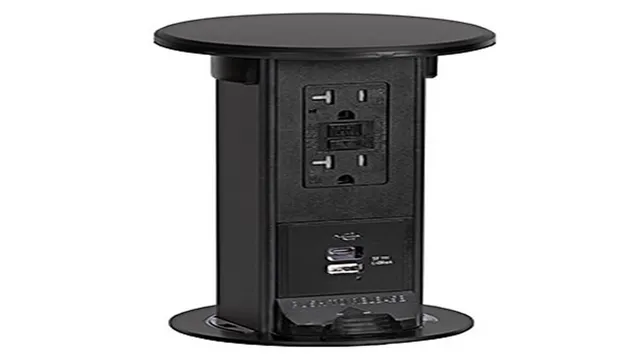
Why Use a GFI Outlet for Electric Car Charging?
GFI Outlets Electric cars have become the new norm for environmentally-conscious individuals, but they require specialized equipment for charging. That’s where GFI outlets come in. GFI outlets, or Ground Fault Circuit Interrupter outlets, are designed to prevent electrical shock from occurring.
They work by constantly monitoring the electricity flow and immediately shutting off if they detect an imbalance. This makes them ideal for electric car charging, as there is a higher risk of electrical shock due to the high voltage required. Not only are GFI outlets safer, but they are also more convenient for electric car owners.
The outlets can be installed in a garage or outdoors near a parking area, allowing easy access for charging. If you are considering purchasing an electric car, it is important to invest in a GFI outlet for safe and efficient charging.
Charging Your Car’s Battery
Charging the battery of your electric car can be done easily, but it’s important to ensure that you follow certain safety precautions. First and foremost, make sure that your charging station is equipped with a GFI, or ground fault interrupter, which will protect you from electrical shock in case of a malfunction. Then, plug in your vehicle, making sure that the charging cable is properly connected and secured.
Most importantly, always choose a charging speed that matches your car’s battery capacity and follow the manufacturer’s guidelines for charging duration and frequency. By doing so, you’ll ensure that your electric car runs smoothly and reliably for years to come.
Understanding Electric Car Batteries
When it comes to charging your electric car’s battery, it’s important to understand the different charging options available. The most common option is Level 1 charging, which uses a standard 120-volt household outlet and can take up to 20 hours to fully charge a depleted battery. Level 2 charging, on the other hand, requires a 240-volt charging station and can charge your battery in as little as 4-8 hours.
Finally, there’s Level 3 charging, also known as DC fast charging, which can charge your battery up to 80% in just 30 minutes. It’s important to note that not all electric cars are capable of Level 3 charging, so it’s important to check your car’s manual before attempting to use this option. No matter which charging option you choose, it’s crucial to monitor your battery’s charge level to ensure you don’t accidentally run out of juice while on the road.
With a little bit of planning, you’ll be able to keep your electric car running smoothly and efficiently, no matter where the road takes you.
Charging Methods for Electric Car Batteries
Electric Car Batteries Charging your electric car battery can be done in several ways, each with its own advantages and disadvantages. The most common method is Level 2 charging, which uses a 240-volt electric outlet and can fully charge your car’s battery in a few hours. This method is great for overnight charging at home or for use at workplace charging stations.
Fast charging, also known as Level 3 or DC fast charging, can charge your battery to 80% capacity in less than 30 minutes. However, it’s not recommended for daily charging as it can significantly reduce the battery life over time. Wireless charging is also an option, where an electromagnetic field transfers power from a charger pad placed on the floor to a receiver on the car’s undercarriage.
This method is still in its infancy and not widely available. Overall, it’s important to consider which charging method best suits your needs and driving habits to ensure you get the most out of your electric car battery.
How to Charge Your Car’s Battery with a GFI Outlet
“Electric car charging with GFI outlet” If you own an electric car, it’s crucial to understand how to charge your car’s battery with a GFI outlet. The first step is to ensure that the outlet is installed and grounded correctly. Next, plug in the car’s charging cable into the GFI outlet and then connect it to the car’s charging port.
Once the connection is established, ensure that your car’s charging mode is set to the correct level, depending on how much charge you need in your battery. Many electric cars come with a level 1 charger that can take up to 8 hours to charge your car fully. In comparison, Level 2 chargers can reduce the charging time to around 4 hours.
Keep in mind that your car’s manual will include specific instructions on charging your electric car, so it’s essential to read it thoroughly. Charging an electric car with a GFI outlet is a straightforward process, but it’s crucial to follow the manufacturer’s instructions and ensure that the outlet is installed correctly to avoid any electrical hazards.
Tips for Safe Electric Car Charging
When it comes to charging your battery electric car, safety should always be a top priority. One important safety measure to consider is having a GFCI or ground fault circuit interrupter installed. This device can detect electrical faults and quickly shut off the power to prevent shocks or electrocution.
Another tip for safe charging is to use a dedicated circuit for your EV charger. This means that no other appliances or devices are connected to the same circuit as your charger, which reduces the risk of overloading and tripping a circuit breaker. It’s also important to check your charging cables and sockets regularly for signs of damage or wear and tear, as these can increase the risk of electrical fires or malfunctions.
With these simple steps, you can ensure that your electric car charging process is safe and worry-free. And don’t forget your GFI!
Do’s and Don’ts of Electric Car Charging
When it comes to electric car charging, there are a few do’s and don’ts to keep in mind to ensure a safe and efficient charging experience. Firstly, do make sure to use the recommended charging equipment for your specific vehicle model. Using incompatible chargers can damage the car’s battery or even pose a fire hazard.
Another important tip is to always inspect the charging station, cable, and plug for any signs of damage before plugging in. On the other hand, don’t charge your car with an extension cord as it can cause overheating and a potential fire risk. Also, try to avoid charging your car to 100% capacity every time as it can put extra strain on the battery and shorten its lifespan.
By following these simple do’s and don’ts, you can ensure a safe and efficient electric car charging experience.
Proper Maintenance for your Electric Car’s Battery
Proper maintenance of an electric car’s battery is essential to ensure its longevity and optimal performance. One crucial aspect of maintaining your battery is safe charging, which not only safeguards the battery’s lifespan but also your safety. To ensure safe charging, always use the recommended charging cables and adapters provided by the manufacturer.
Additionally, make sure to charge your vehicle in a well-ventilated area, avoiding charging in enclosed spaces where fumes can accumulate. Moreover, never overcharge your EV battery as it can lead to thermal runaway and result in catastrophic battery failure. It’s crucial to monitor your battery’s voltage and temperature while charging and turn off the charging immediately when it reaches a full charge.
Following these tips can help you charge your electric car safely and enjoy a longer-lasting and efficient battery.
Conclusion and Next Steps
In the world of electric cars, the GFI charging process is like a superhero with a special power. Just like how a superhero protects and saves the day, the Ground Fault Interrupter (GFI) in a charging station protects your car from electrical mishaps, ensuring a safe charge every time. So, next time you plug in your electric vehicle, know that the GFI charging process is your trusty sidekick, making your journey smoother and safer!”
FAQs
What is a GFI and how does it impact charging an electric car battery?
A GFI (Ground Fault Interrupter) is a safety device that shuts off electrical power if it detects a ground fault or current leak. This can impact charging an electric car battery if the GFI detects a fault and shuts off power, causing the charging to stop and potentially leaving the battery with an incomplete charge.
Can you safely charge an electric car battery without a GFI?
It is not recommended to charge an electric car battery without a GFI for safety reasons. The GFI is designed to prevent electrical shock and protect against fire caused by current leaks or faults.
How long does it typically take to fully charge an electric car battery with a standard charging station?
It can take anywhere from 4-8 hours to fully charge an electric car battery with a standard charging station, depending on the size of the battery and the charging rate of the station.
What is the difference between a Level 1 and a Level 2 charging station?
A Level 1 charging station uses a standard 120-volt household outlet and can fully charge an electric car battery in around 8-12 hours. A Level 2 charging station uses a 240-volt outlet and can charge an electric car battery in around 4-6 hours, making it a faster charging option.


